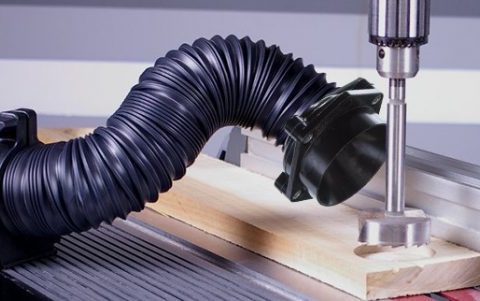
Nex Flow compressed air-operated air knives are produced in two versions. The standard version operates by having compressed air exit the knife for a specially designed surface and mix with atmospheric air to produce a laminar flow of high-velocity air.
The compressed bends 90 degrees as it passes over this aerodynamically shaped surface. The more modern X-Stream Air Blade air knife also works with the compressed air exiting the knife and mixes with atmospheric air to produce a laminar flow of high-velocity air.
However, the air goes straight and does not bend. Each version has its particular specifications and advantages depending on the application. Both air knives have a laminar flow, but the flow profiles differ. That needs to be considered in any application as both flow profiles spread the further the air knife is from the target.
Energy efficiency may also be a consideration, primarily if multiple air knives are utilized at the factory location. The more recent versions have a higher force-per-air consumption ratio and are 15% more efficient than the older standard designs.
Both types can generally be used for the same applications as a barrier. However, when the air barrier must maintain contact with the protected surface, the standard air knife is ideal if the distance covered is relatively short. An example would be creating an air barrier over a camera or sensor lens.
The standard air knife can be placed to take advantage of the 90-degree bend over the surface where the compressed air exits the air knife. The final surface before the air leaves the device can be placed flush with the lens.
The laminar airflow clings to the lens and maintains contact along the entire surface, providing an effective barrier to floating debris, particulate, and moisture. Standard air knife designs have been used to protect outdoor camera lenses against ice forming in cold weather. The laminar flow can be extended a fair distance by continuing the clinging action beyond the air knife itself with a continuous surface.
This was even done at a university project where the standard air knife made an airflow cover for a game that floated pieces on top of this air barrier.
The X-Stream Air Blade air knife will produce a sharper or narrow profile and concentrates force over a greater distance than the standard design. This makes it more economical when more considerable distances require a barrier of air.
One example is using the X-Stream Air Blade air knife on plastic injection molding machines or machining operations where mist must be contained when the machine door is opened for inspection or material is added or removed.
The air supply can be turned on automatically when the door opens and off when it closes. There are many operations where visual access is required, but particulate, dirt, debris, and even heat must be contained. These air knives can provide visual access with the necessary barrier. Because of the laminar flow from the air knife, it can provide an effective heat shield to some extent.
These air knives can be helpful when a critical part is washed and needs to be kept clean. Instead of using plastic at the entrance and exit of a washer to contain water mist, use air knives. Plastic will get dirty and negatively impact the cleanliness of a washed part after it is washed. An air barrier eliminates that problem.







